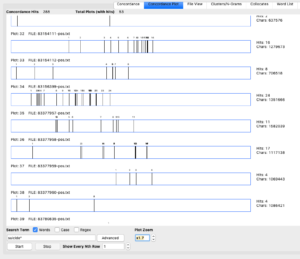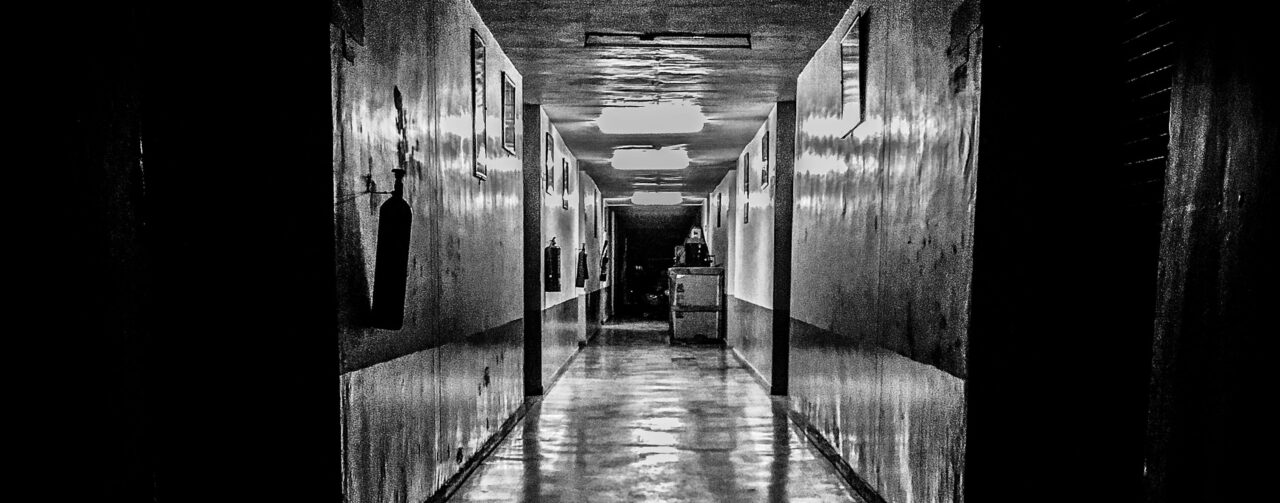by Rioney Perera
I. Introduction:
Asylums under the governance of British India during the 19th Century aimed at treating Indian patients with mental illnesses. “Superintendents believed that in order ‘to restore the mind’, they had to bring the ‘physical frame of its inhabitants’ into ‘a sound and vigorous state” [Pinto]. This idea of restoring the body to restore the mind led to methods of treatment that can be regarded as abusive due to their “cultural insensitivity” [Pinto]. Treatment towards the patients included utilisation of restraints, force-feeding and confinement. Mills states that the methods used by British officers were steps employed at asserting control [87]. “Exclusion and isolation, rather than direct physical contact, was adopted to chastise and frighten the inmates” [Mill, 87]. In addition, due to negligence within the wards, there were repeated instances of patient suicide. Through Antconc software, created by Laurence Anthony, I have analysed the Medical History of British India corpus, provided by the National Library of Scotland in order to validate the mistreatment within permitted treatments of the patients.
I. Analysis:
By entering the search ‘restrain*’ in the concordance search I was able to find the words associated through the collocate function. I disregarded syncategorematic words, such as ‘under’ and ‘from’, as they are used for functionality in a clause and do not provide meaning in my analysis. This meant that ‘Mechanical’ was the most frequent word associated suggesting that 18.4% of the ‘restrain*’ results refer to mechanical restraints. Furthermore, the next word associated with ‘restrain*’ is liberation. When looking at the concordance of the 41 ‘liberation’ files, 40 of them refer to ‘liberation_NN from_IN restraint_NN’. Liberation etymologically means ‘set free’ which adds a suggestion of imprisonment to the purpose of restraints [OED Online]. This is further supported by the collocate words associated with ‘restrain*’ as ‘confinement’ was the 5th word with the highest frequency.

Mill states that “The patients resisted attempts to force them to lead a dehumanized existence by refusing to eat food or wearing clothes.” There are 48 instances within the text of patients refusing food when searching ‘refuse*_* food_*’ with words following including “scarcely talked”, “sullen” and “intractable.” This supports Mill’s claim that refusal of food was a reaction to the oppression they faced in the wards as they display other anti-social behavioural qualities that reject treatment. In addition, narrowing the search allows a closer look at the files. Therefore, examples of the staff’s reactions to the patients’ refusal of food were clearer:
- File 83154111: Refused food. Had to be fed by nutrient enemata and other artificial means.
- File 83154111: He refused food and was intractable. His health failed gradually. Had to be fed by enema.
Further investigation into the reactions to force-feeding led to a search ‘rect*’ and the context search ‘fed’ ‘injections’ and ‘injection’. This brings up a result that illustrates the mistreatment in the rectal feedings that undoubtedly go past ‘medical help’ and towards abuse. Instances of such include:
- File 82804931: Forcible feeding and methods in use In the Madras Asylum 27 cases required forcible feeding by the naso-pharyngeal tube , and 1 case was fed per rectum.
- File 75006569-pos-tag: the patient improved from the moment quinine to the amount of 20 grains was given per rectum in beef tea
Evidence of other treatments using rectal injections included injections of ‘ice water’ (74463193-pos.txt). In addition, to other methods of force-feeding such as 7 results of stomach-pump and 8 results of nasal force-feeding. Pinto notes that “apart from solid food, drinks played an important role in manipulation, control, and the creation of distinctions between patients”. As proven by the data set, there were forceful rectal methods of treatment, that go past medical help. “Pain and shame were weapons in the armoury of the asylum superintendent in confronting behaviour he considered undesirable” [Mill, 88]. The injection of “beef tea” appears to be a weapon to shame the patients for not eating and a mode of control. It appears that under the guise of treatment patients were being punished. Therefore, it stands as a form of mistreatment within the medical treatment of the patients and brings to question whether these methods can be considered non-violent.
Moreover, the amount of suicides and escape attempts in the asylum has to be looked at. 288 results appeared when searching ‘suicide’ in the concordance field. To identify how widespread the mention of suicide was across the data set I examined the concordance plot and saw that 53 of the ‘suicide*’ results were from different files.

The widespread nature of the mentions of suicide across 53 files supports that suicide was widespread and not localised to one institution or a few cases. In particular, the concordance plot allowed for the investigation of specific files with clusters of suicide mentions. File 83154111 mentioned suicide 24 times and by going through the file I found that it listed the amounts of suicides from the years 1883 to 1894 in Lunatic Asylums in Tezpur. Every year there were instances of suicide further supporting that patients felt the need to escape the asylums was widespread. Bhattacharyya notes “the desire to leave the asylum by death is telling” [137]. It suggests negligence within the staff as it was, as seen, a regular and widespread occurrence throughout the asylums. Isolated cases could have been perhaps argued as isolated cases of neglect by staff, however, the widespread impact suggests an institutional level of negligence.
I. Summary:
The treatment of patients within the Asylums was medically approved by the British medical staff. However, as we can see their methods included aggressive physical and mental actions that were likely traumatising for the patients. Through investigation, the use of rectal treatments appears to go past medical reasons into abuse. In addition, interestingly the language around this has suggested the restraints were purposed to control the patients. Accompanied by the negligence that led to widespread suicides, the treatment of the Indians appears to show institutional mistreatment.
Photo by Jagdeep Singh on Unsplash


